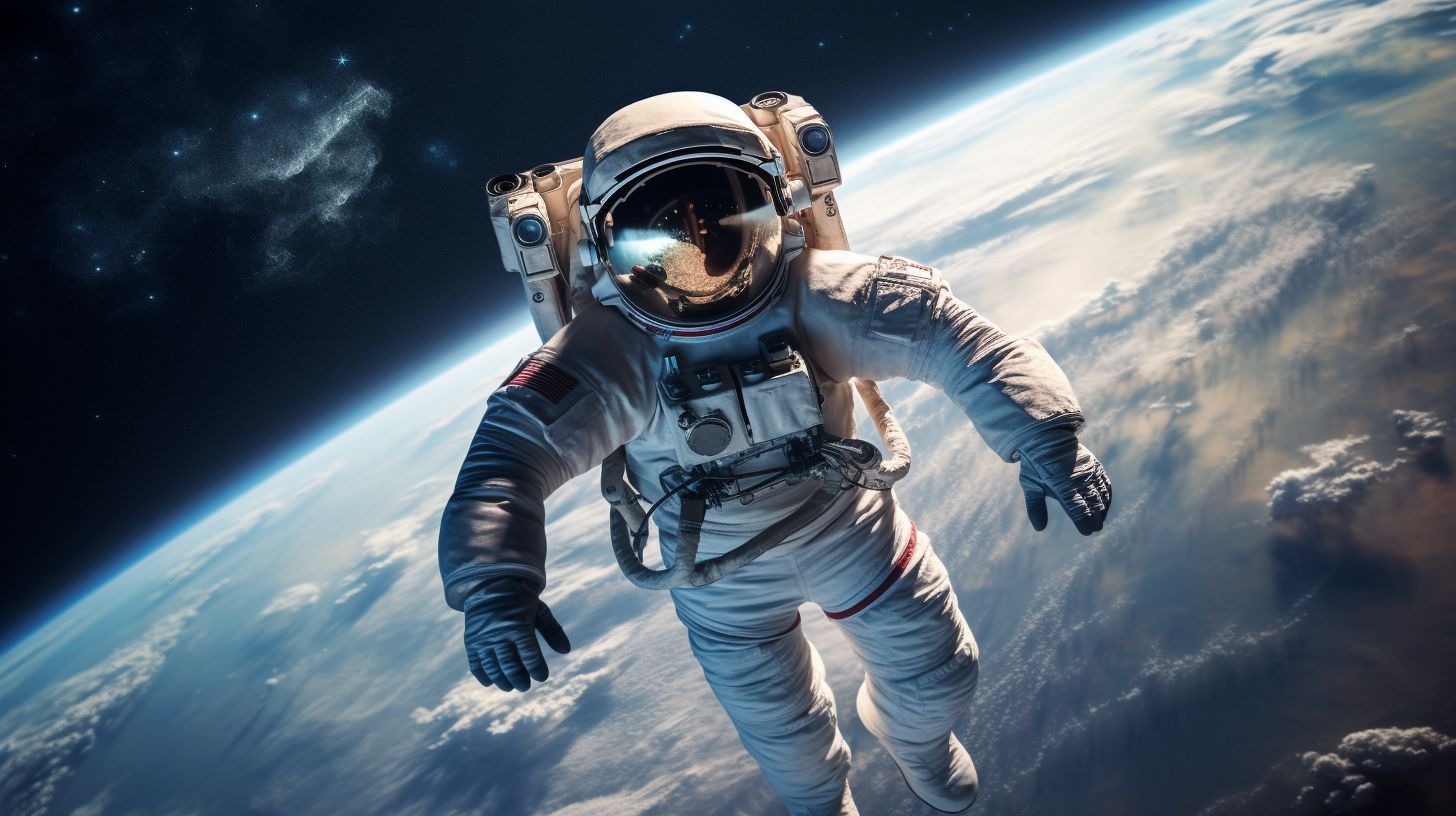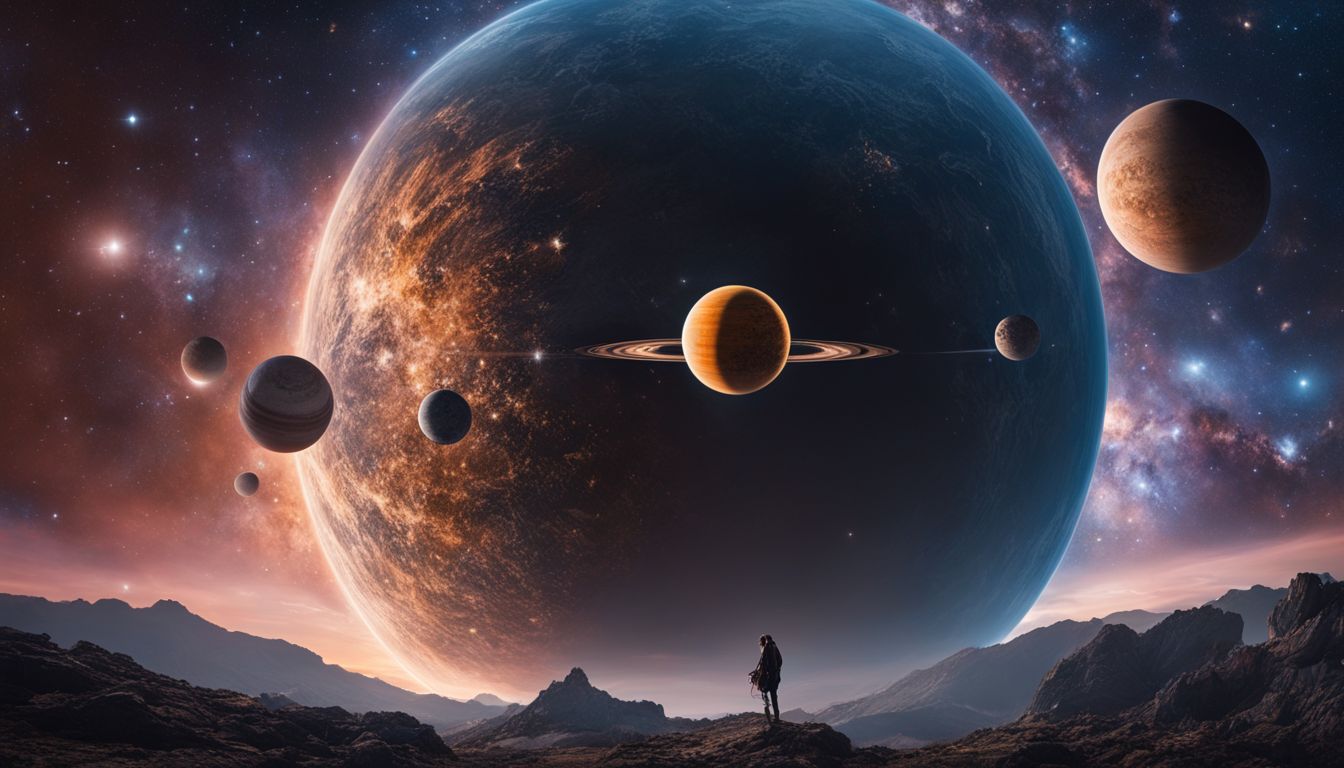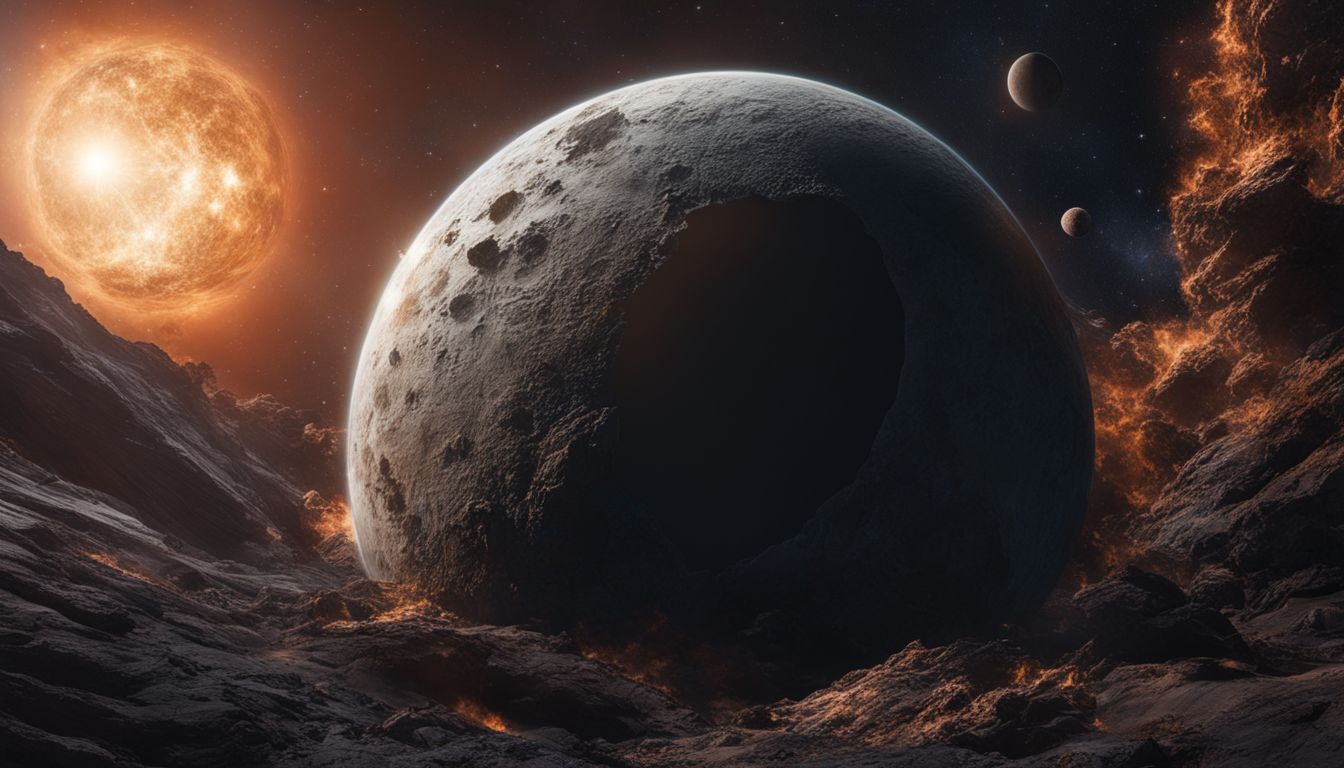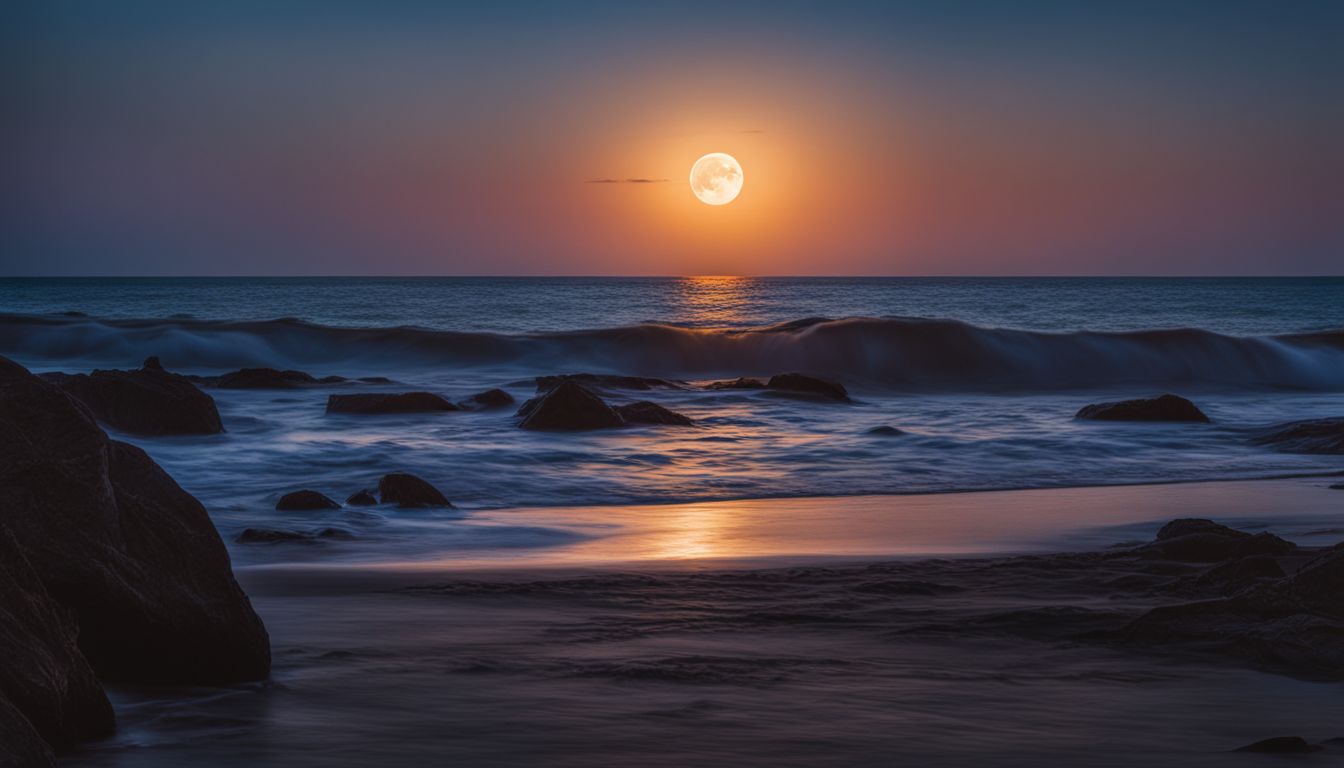Why Do Planets Have Moons And How Does It Impact Life On Earth?
Ever scratched your head, wondering why planets have moons and just how exactly that impacts life here on Earth? Well, you’re not alone! It’s a question we’ve been mulling over as well.
After pouring over some intense space research that gave us more than a couple of sleepless nights, we pieced together this cosmic puzzle. Turns out our very own Moon likely came into existence after what must have been an epic collision between Earth and another object roughly the size of Mars! In this article, strap in for a journey where we’ll delve into the captivating world of celestial science to understand why planets boast moons and how their silent yet powerful influence shapes life as we know it on Earth.
Ready to embark on this star-studded voyage with us?.
Key Takeaways
- Planets have moons due to formation theories and gravitational forces, such as collisions or capture by a planet’s gravity.
- Moons play a crucial role in shaping life on Earth by creating tidal effects, stabilizing the planet’s rotation, and influencing climate patterns and seasons.
- Examples of significant moons include Earth’s moon, which affects tides and stabilizes our planet’s rotation, as well as unique moons like Europa and Titan that could potentially harbor life.
- Understanding these moons provides valuable insights into factors that make planets habitable.
Why Do Planets Have Moons?
Planets have moons due to various formation theories, gravitational forces, and the capture hypothesis.
Formation theories
Planets get moons in two main ways. One way is by a big space rock hitting the planet. This hit can send bits of the planet into space. These bits then come together and make a moon.
A good example of this is our own Moon! The second way is when a planet pulls in a passing space rock with its gravity. This process, known as capture, makes the space rock become a moon.
Each method helps us understand how planets got their moons.
Gravitational forces
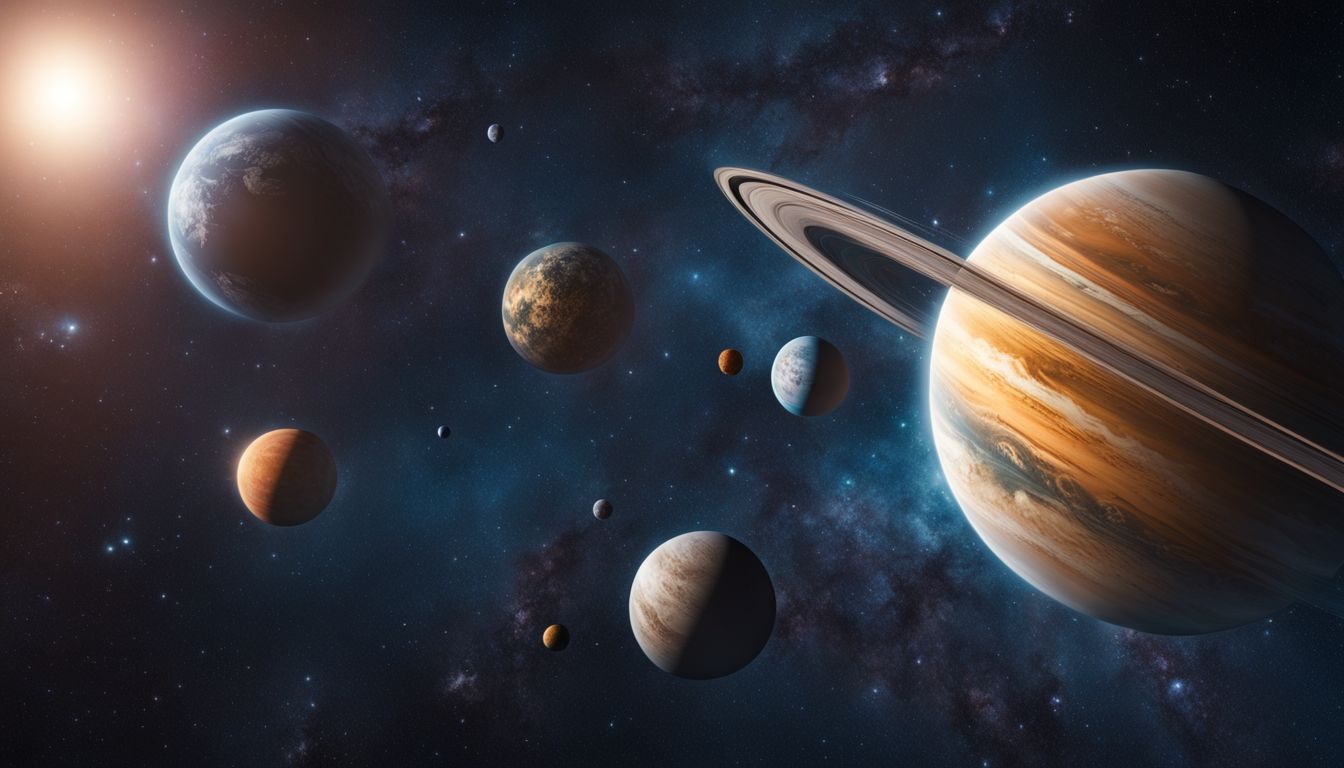
The Moon and Earth are examples of this bond. The Earth’s gravitational force grabs the Moon and keeps it close by in orbit. In turn, the powerful tug from the Moon affects our oceans, making tides rise and fall every day!
Capture hypothesis
Some moons are born from their planet. Others come to the planet. This is the “capture hypothesis“. It says that a moon was flying through space on its own one day. Then, it got close to a big planet.
The big planet’s gravity pulled it in like a trap. Now, it spins around and around the big planet as a moon. Some people think this is how Mars got its two little moons! Have you ever thought of that? Planets can be quite sneaky!
The Impact of Moons on Life on Earth
Moons play a crucial role in shaping the environment on Earth, with their gravitational forces creating tidal effects and stabilizing our planet’s rotation. Additionally, they influence climate patterns and seasons, making them essential for sustaining life as we know it.
Tidal effects
The Moon has a significant impact on life on Earth through its tidal effects. Tides are caused by the gravitational pull of the Moon and Sun, which creates high and low tides in our oceans.
These tidal movements have important ecological and environmental implications. For example, tides help distribute nutrients and oxygen to marine organisms, influencing their growth and survival.
They also contribute to coastal erosion and shape the coastline over time. Additionally, tides have economic significance as they affect activities such as fishing, shipping, and tourism in coastal areas.
Stabilizing the planet’s rotation
The Moon has an important role in stabilizing the Earth’s rotation. Its gravitational pull helps to keep our planet spinning steadily on its axis, which is crucial for maintaining a stable climate and environment.
Without the Moon’s influence, Earth’s rotational axis could be more erratic, causing extreme variations in temperature and weather patterns. The Moon acts as a kind of “anchor” that helps to regulate our planet’s spin, keeping it balanced and consistent over time.
This stability is essential for life to thrive on Earth, as it provides a predictable and habitable environment for plants, animals, and humans alike.
Influencing climate and seasons
The Moon plays a big role in influencing Earth’s climate and seasons. Its gravitational pull affects the ocean tides, which can impact coastal areas and marine life. The Moon also helps stabilize Earth’s spin axis, which keeps our planet from wobbling too much.
This stability is important for maintaining a consistent climate over long periods of time. Additionally, the Moon’s presence affects the amount of sunlight that reaches different parts of Earth, leading to variations in temperature and weather patterns throughout the year.
Overall, the Moon has a significant influence on our planet’s environment and the conditions that support life.
Examples of Significant Moons
From Earth’s moon to the unique moons of other planets, let’s explore the fascinating characteristics and impacts they have on our planet and beyond. Read more to discover the wonders of these celestial companions.
Earth’s moon
The Moon is Earth’s only natural satellite and it plays a significant role in our daily lives. It affects the tides on Earth, creating the rise and fall of sea levels. The gravitational pull from the Moon also influences our planet’s spin axis, helping to stabilize its rotation.
Additionally, the Moon contributes to Earth’s climate by affecting weather patterns and seasons. Its shape, size, density, and distance from Earth create a stable environment that is crucial for life to thrive.
Furthermore, the Moon has been explored by humans and continues to be an object of scientific interest in understanding celestial bodies and their potential habitability.
Moons of other planets
Our solar system is home to more than 200 moons orbiting various planets. Each moon is unique and has its own set of characteristics. Let’s take a closer look at some of these moons.
Notable Features
| Moon | Planet | |
|---|---|---|
| Deimos | Mars | Smallest moon of Mars, has a smooth surface due to a blanket of dust |
| Europa | Jupiter | Covered in ice, could potentially harbor life |
| Ganymede | Jupiter | Largest moon in the solar system, has its own magnetic field |
| Titan | Saturn | Only moon known to have a dense atmosphere and stable bodies of surface liquid |
| Triton | Neptune | Orbits in the opposite direction of Neptune’s rotation |
These moons can provide valuable insights into the factors that make planets habitable. The study of other moons in our solar system helps us understand the many ways in which celestial bodies can form and evolve.
Notable moons and their characteristics
There are hundreds of moons in our solar system, each unique and interesting in its own way. Here are some of the most notable ones and their distinctive characteristics.
| Moon Name | Host Planet | Notable Characteristics |
|---|---|---|
| Earth’s Moon | Earth | Our Moon is the fifth largest moon in the solar system and plays a significant role in driving the Earth’s tides, stabilizing our planet’s rotation, and influencing our climate. It’s the only moon that has been visited by humans. |
| Io | Jupiter | Io, one of Jupiter’s largest moons, is the most volcanically active body in the solar system. It has over 400 active volcanoes. |
| Titan | Saturn | Titan, Saturn’s largest moon, has a thick atmosphere, and it’s the only moon in our solar system that has stable liquid on its surface. These liquids are made up of methane and ethane. |
| Europa | Jupiter | Europa, another of Jupiter’s large moons, is believed to have an ocean of water beneath its icy surface. It’s considered one of the best chances for finding life elsewhere in the solar system. |
| Charon | Pluto | Pluto’s largest moon, Charon, is notable for being nearly the same size as its host planet. It also shares a mutual orbit with Pluto, making them a binary system. |
Every moon in our solar system has its unique features that provide valuable insights into the factors that can make a planet habitable. Understanding these moons can help us better understand our own and the important role it plays in maintaining life on Earth.
Conclusion
In conclusion, planets have moons because of different formation theories and gravitational forces. These moons play a crucial role in the stability of Earth’s climate, rotation, and tides.
They also provide valuable insights into what makes a planet habitable. So, next time you look up at the night sky and see the Moon shining bright, remember how important it is for life on Earth!
FAQs
1. Why do planets have moons?
Planets have moons because of gravitational forces. When a planet forms, the leftover material can come together to form a moon that orbits around the planet.
2. How does having a moon impact life on Earth?
Having a Moon impacts life on Earth in various ways, such as stabilizing our planet’s tilt and creating tides in the oceans which are crucial for marine ecosystems and nutrient distribution.
3. Does every planet in our solar system have a moon?
No, not every planet in our solar system has a moon. Some planets like Mercury and Venus have no moons, while others like Saturn and Jupiter have multiple moons.
4. Can moons support life like Earth does?
It is possible for certain types of moons to support life, but conditions would need to be just right with factors like atmosphere, water, and temperature being favorable.
5. What is the largest moon in our solar system?
The largest moon in our solar system is Ganymede, which belongs to Jupiter. It is even larger than some planets like Mercury and Pluto!
